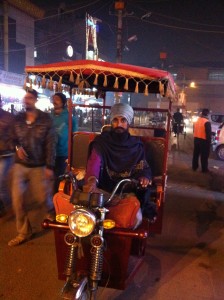Over the last few years, New Delhi saw the swift and stealthy rise of the electric auto-rickshaw, till they were banned earlier this year. Passengers travelled on fixed routes for an affordable flat rate fare of Rs10-15 on some 1 lakh e-rickshaws, all of which functioned without official sanction. Regulating e-rickshaws has been tricky. Proponents first claimed a majority of the fleet was below the 250kW threshold, classifying them as non-motorised vehicles under the Motor Vehicles Act, thus precluding regulation. This was not true. Compliance with the act requires mandatory commercial licences for e-rickshaw drivers. This mandated a removal of the entire fleet, impacting both urban transport and driver livelihoods. A protracted discussion is still ongoing among the judiciary, Delhi government and the transport department. As per a court order, authorities could allow e-rickshaws only after making necessary changes to the law. While Parliament passed a bill to regularise e-rickshaws by bringing them under the Motor Vehicles Act, the Delhi government and police are still taking action against e-rickshaws operating in violation of court orders.
While there are many opinions on how e-rickshaws should be regulated, nobody asks “Why regulate?” What is the public benefit? Regulation might protect a passenger from an unsafe machine. With almost no reports of accidents involving mechanical failures, this new technology has performed quite well. However, even if the technology is safe, it could be driven rashly. Regulation can protect people from dangerous driving. Delhi’s e-rickshaws operate at low speeds, causing fewer accidents. Although there were 36 accidents involving e-rickshaws till this July, there were only two fatalities in Delhi. In contrast, in just 2012, 205 people died in cars and 489 on motorcycles. E-rickshaw seems safer than most other vehicles on Delhi’s roads.
Even if we accept e-rickshaws are safe, there is still what economists call “asymmetric information” — not knowing the right fare, passengers can be overcharged. However, this does not apply to Delhi’s fleet, as most ran on fixed routes with a flat fare. Regulation can minimise externalities, such as congestion and pollution. But cracking down on the potential impact of a fleet of small electric vehicles rather misses the point in a city adding more than 600 fossil-fuel powered private vehicles per day.
E-rickshaw drivers are also part of the “public”. An “open-access” market for passengers can reduce efficiency spreading passengers, and thus income, thinly across a growing number of drivers. However, deciding on numbers, usually through a permit system, is difficult. For many years, a strict permit system for auto-rickshaws created a permit raj in which non-driving permit holders received half the driver’s daily revenues.
If we don’t need to protect passengers or operators, why regulate? Regulating the e-rickshaw sector is justified for a single reason common to both passengers and drivers — insurance. The Delhi High Court judgment directs e-rickshaws to be allowed only after ensuring insurance coverage, among other things. Passengers injured in an uninsured e-rickshaw cannot make insurance claims. Without insurance, the e-rickshaw is vulnerable to accident or theft. Without state regulation and legal status, obtaining insurance coverage is impossible. Solving the insurance problem should be at the heart of any regulatory strategy. Authorities should implement light-touch regulation, refraining from imposing unrealistic burdens on operators and enabling insurance companies to access the e-rickshaw market. This might include a register of drivers and a database linking vehicles to owners. Some form of basic driver-training should be instituted too.
However, all this should stop well short of the permit raj that hampers auto-rickshaw drivers.
This post is jointly written with Simon Harding, and first appeared on the Indian Express Daily: http://indianexpress.com/article/opinion/columns/one-for-the-road-21/99/#sthash.4H0Gn8bM.dpuf.

